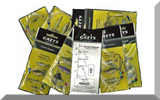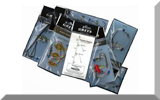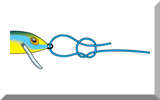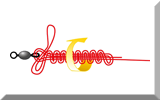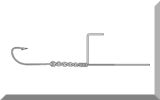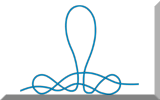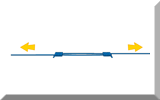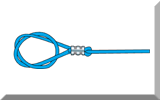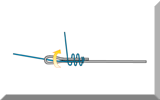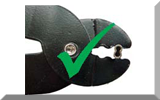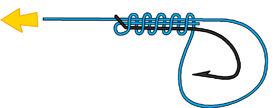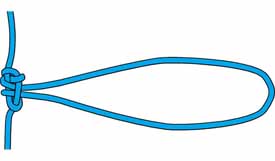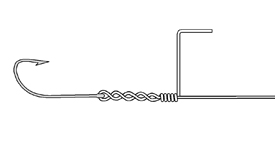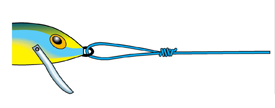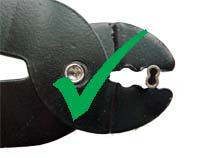Saltwater Fishing Knots and Crimped Connections
|
|
If you decided to learn how to tie just one saltwater fishing knot - make sure it's the Uni-Knot! As one of the easiest fishing knots to tie, and with a breaking strength only slightly less than the line it s tied in, you can use it to attach the line to your swivels, hooks and lures(although the Rapala Knot is a better knot to use for lures) and also to join two lines together. |
|
The Braid Knot is the most secure way of connecting a swivel to braid lines. It's been designed to deal with the special qualities of today's hi-tech braided lines, which can have a tendency to slip when tied with some other knots. |
|
The Snood Knot is the one to use for joining mono to hooks with cranked eyes, where it will hold the hook shank in-line with the hook length rather than allowing it to rotate, as would a Uni-Knot. Conversely, it shouldn't be used on hooks with straight eyes, as it will hold them off at an angle - use the Uni-Knot for those. |
|
The Dropper Loop (also known as both a blood loop and a snood loop) is designed to stand off from the line at 90 degrees - and therein lies the problem. No line likes a sharp bend like this - it will always create internal stresses resulting in an inherent weakness. But the version described here is one of the strongest. |
|
The Albright Knot, sometimes known as the Albright Special Knot, is a saltwater fishing knot developed specifically for joining mono line to a single strand wire leader without having to use a barrel swivel at the connection. |
|
Not a dance style from the early sixties as you may first think, the Haywire Twist is the way to connect single-strand wire leaders to lures, swivels and hooks. |
|
To attach your lure to a mono leader of less than 50lb breaking strain, the Rapala Knot is the best way to go. This knot doesn't snug up tight to the lure, but creates a loop which gives the lure freedom to move as its designers intended. For larger diameter mono, and all multi-strand wire line, you'll need to use a crimped connection. For a single-strand wire leader, the Haywire Twist is your only option. |
|
Special leader knots are required for connecting the main line to the leader. And this is not always straightforward. For instance, the lines may be of two completely different materials, or of very different diameters. Here's how to tie the Leader Knots you need for connecting all types of line types and diameters. |
Worth Remembering ...
Just a few knots will meet all your saltwater fishing needs, but
- make sure to use the right one for the type of line you're tying it with.
- Learn each one thoroughly and tie them with care.
- Always inspect the knot after you 've tied it.
- Does it look right If not, cut it off and tie it again until it does.
- Nothing beats a pair of nail clippers for nipping off the ends of all but the heaviest monofilament.
|
You' ll find it next to impossible to tie any of the above saltwater fishing knots in monofilament line much heavier than 150lb breaking strain, and absolutely impossible in any type of wire line. Crimped connections are the only way to go for heavy mono, nylon-covered wire and cable. Even crimps won t hold in single strand wire; use the Haywire Twist knot for all connections in this material. |
|
Use it as an alternative to rig tubing to create a reinforced loop in heavy mono line. Note the requirement for a crimped sleeve to finish it off. |
